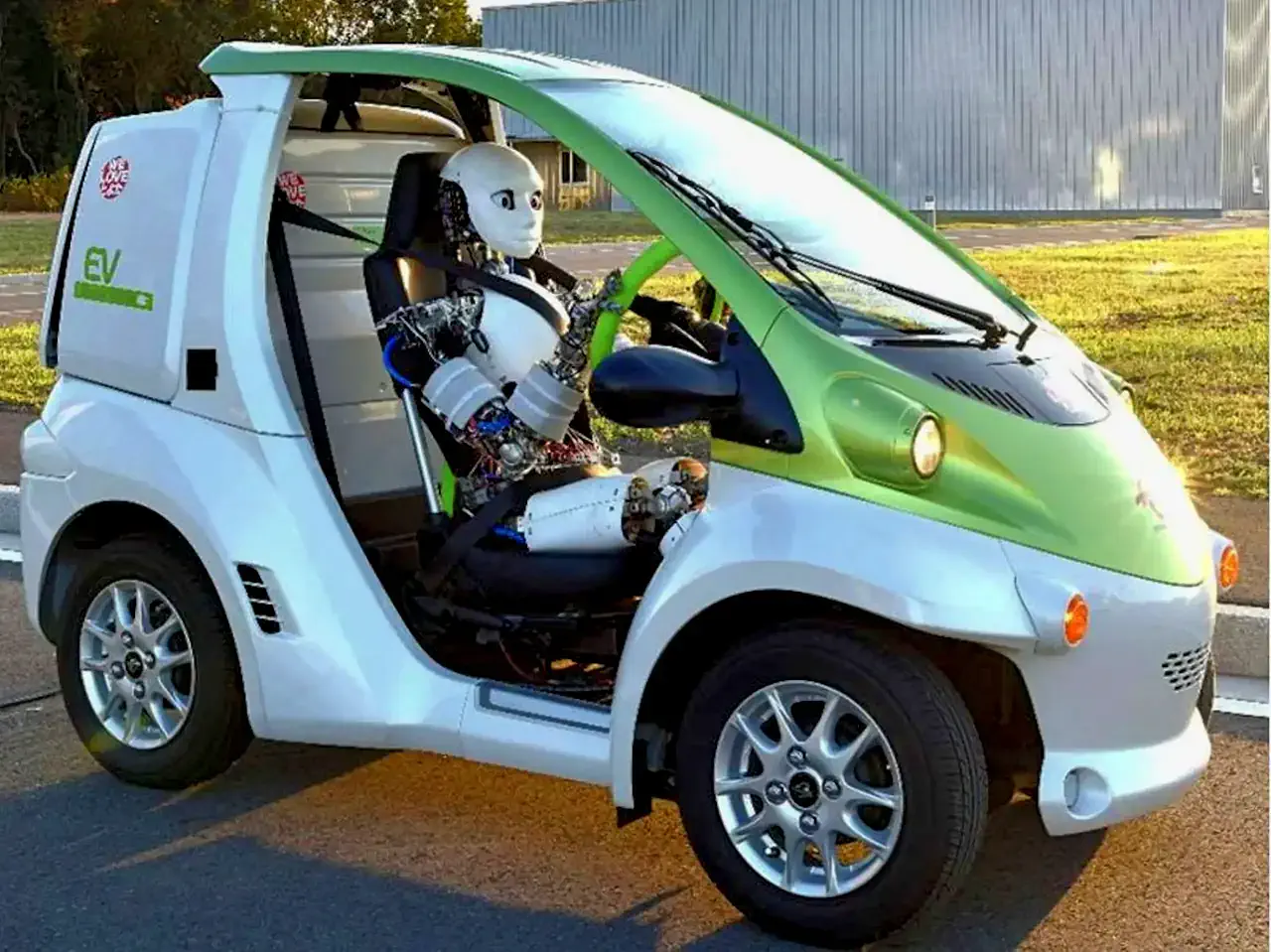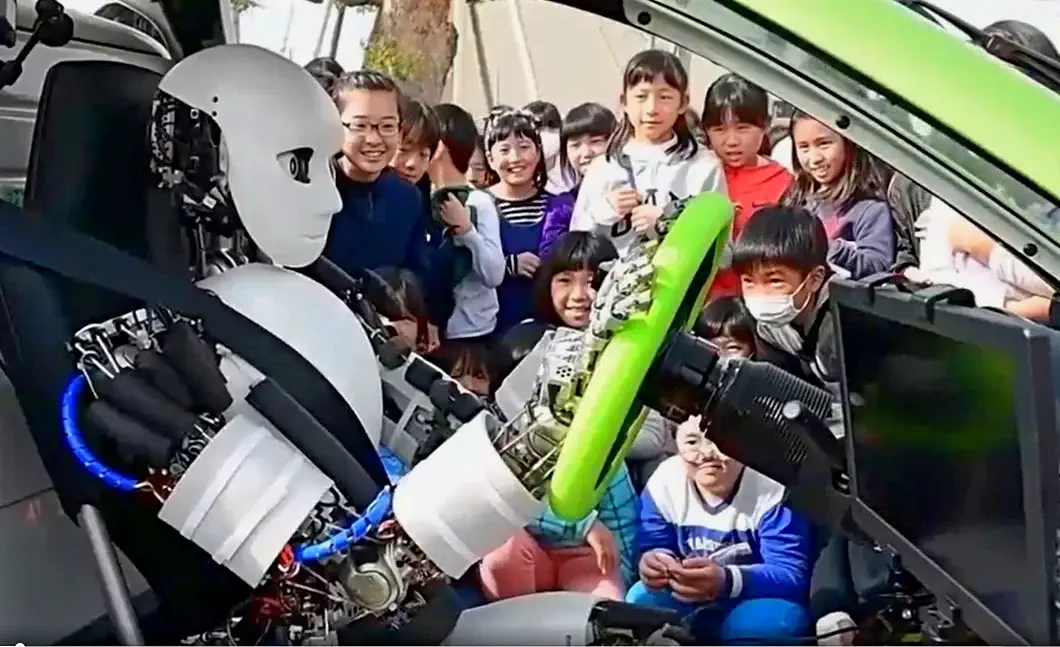
The idea of driverless cars has generated a lot of excitement recently. Major companies have focused extensively on researching and developing autonomous driving technologies.
Researchers at the University of Tokyo have suggested a simpler and more cost-effective idea: using humanoid robots to drive cars autonomously.
The team used Musashi, a humanoid robot designed to mimic the human body. Musashi can sit in a car seat and operate the acceleration and brake pedals.
Researchers report that Musashi’s flexibility, adjustable stiffness, and multiple sensors allow it to steer with both arms and recognize people in the side mirror. The team’s findings were published in the journal arXiv.
Developed in 2019, Musashi is a “musculoskeletal humanoid” created as a testbed for learning control systems. Its design closely mirrors human proportions and mechanics, with a joint and muscle structure inspired by the human body.
The humanoid robot has 74 muscles and 39 joints, not counting the hand. Its musculoskeletal structure includes joint modules, muscle modules, and durable Dyneema fibers.

Researchers note that Musashi’s muscles are arranged in opposing pairs around its joints. The robot’s modular body features precise joint and muscle modules equipped with built-in sensors. The nonlinear elastic unit (NEU) utilizes rubber for enhanced flexibility.
Each of Musashi’s movable eyes houses a high-resolution vision camera that can pan and tilt to capture different perspectives, including straight ahead and quick checks of side mirrors.
Its five-fingered hands, situated at the ends of articulated arms, are skilled at steering the wheel using learning software and sensor feedback.
In another test, Musashi tried to use the accelerator but had difficulty maintaining a steady speed while going uphill.
In addition to driving tests, the robot was evaluated for its ability to detect and react to obstacles such as humans in its path.

